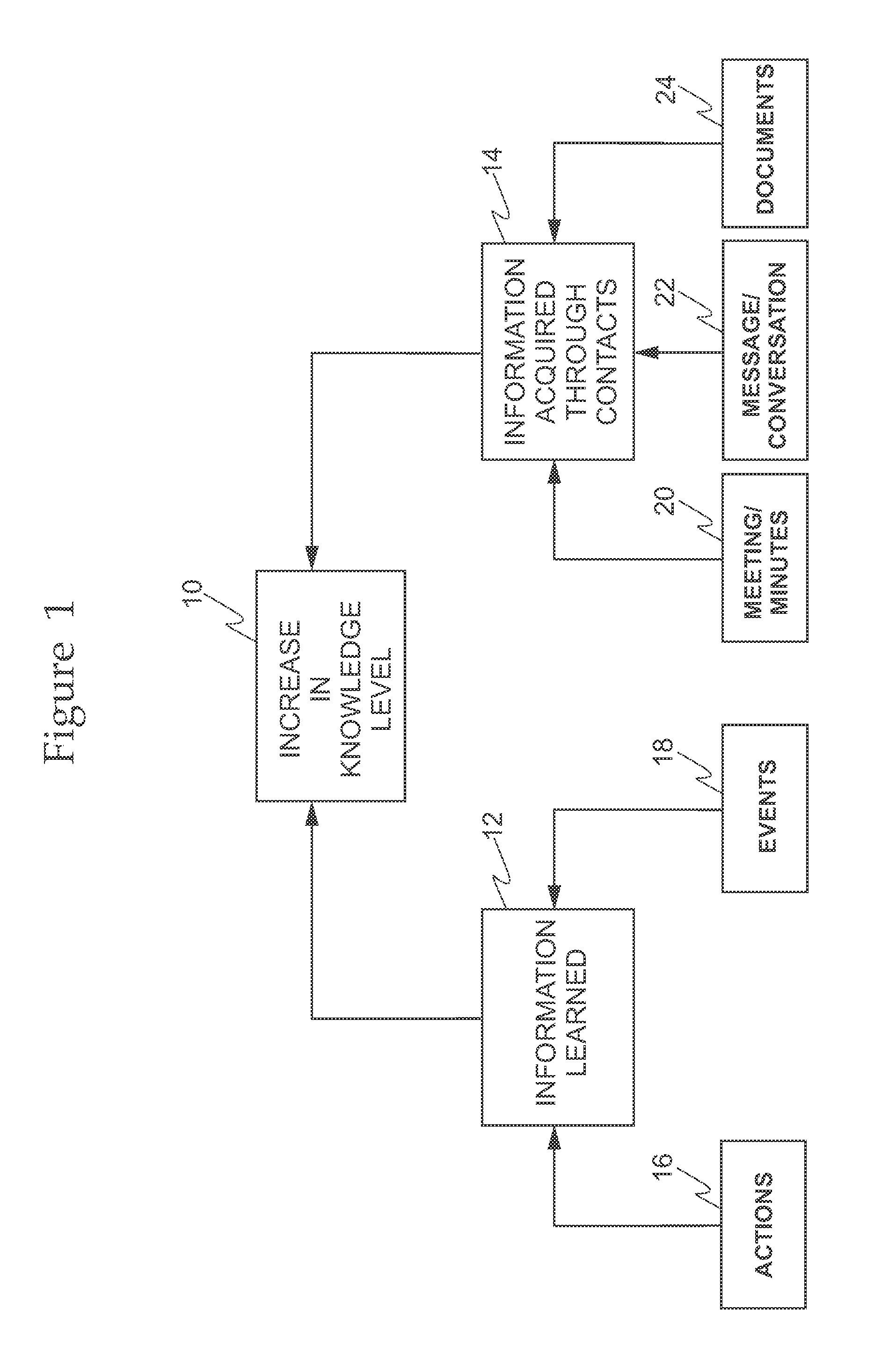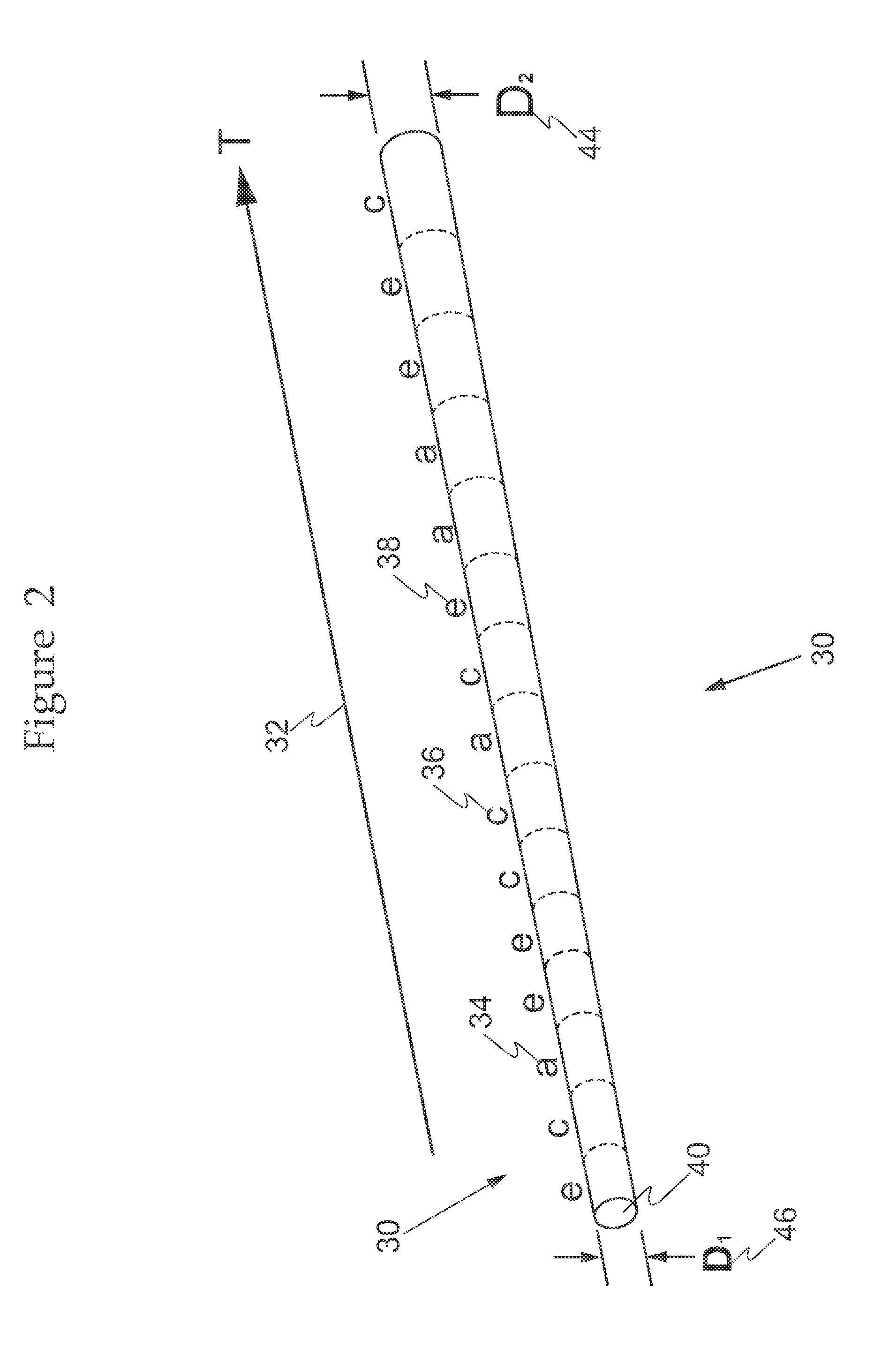The volume of information is already so high that the time necessary to deal properly with it is often unacceptable especially for professionals, scientists and business people.
In consequence, the task of efficiently gathering and extracting information from documents may be both difficult and tedious.
Furthermore, the filing process will generally lead to some extent, to the loss of the flow of information, as portions of information are separated during the filing process.
Creating multiple links is usually tedious, complicated, requires self-discipline and is very costly in terms of memory space.
Even if the meaning of one information as part of a group of information is critical, generally it is not possible to have a global overview of all the various types of information recorded because of the number of different programs needed to visualize the different file types.
With this kind of classification a user can only have a “local” view on what is stored in the computer
system; a problem typically occurs when the
information quantity is too large and diversified.
The problem is exacerbated if links between the different information are provided between the information locally stored in various folders.
If the user has difficulty in filing documents because of the difficulty in deciding the proper categories for the document (e.g. the document does not clearly apply to only one specific folder), the user can file the document in a folder where it will be difficult to retrieve considering it could have been placed logically in many different folders.
Such an approach is labor-intensive, requires considerable self-discipline, and is extremely costly in terms of memory space.
Furthermore, the links between the documents remain non-evident.
The user begins to have a bewildering
clutter of documents in every folder.
With time, the user's needs change and the hierarchical filing
system must be updated with newer considerations but most users are dissuaded because of the known difficulty and time requirements.
It should be noted that the difficulty in filing documents in a computer
system also affects the way the user interacts with the computer in that the user attempts to avoid the difficult work involved in filing a document that is hard to categorize.
This tends to result in the computer becoming cluttered with documents that are hard to categorize or otherwise filed or the user does not attempt to place the documents in the computer system memory at all because of the realization it will be difficult to organize.
This effect tends to negate the advantages of a filing system that has a hierarchical filing system with a
graphical user interface.
It is hard for someone else to understand what the computer system is keeping in its memory considering the different ways users can tailor the hierarchical filing system.
It is hard to understand what is important, what is not, and what is related to what.
Interchangeable knowledge is still difficult to attain.
This is evident in that it is often difficult to understand the information on an unfamiliar computer and the time needed to familiarize oneself with an unfamiliar system is often time-prohibitive.
Prior art information organizing systems usually do not provide a way to easily understand links between the information.
An E-mail, a
web page, a spreadsheet, or a
text document are certainly information but the value they have is limited as long as the links between them is not obvious to another user.
Doing so with an
electronic document will, similar to the paper version, result in permanent alteration of the base document unless a second copy is made.
In addition, conventional information organizing systems suffer from at least another
disadvantage: they do not provide a tool to easily search and visualize the search results starting with an arbitrary
information element.
Easily displaying all the elements linked and their sequence of entry is usually difficult.
Furthermore, displaying all the elements of information linked by a combination of attributes to display all the linked elements in the order or sequence that they have been entered (it may, for instance, be useful to show a series of communications that have led to a final memo, or a series of reports that have led to a given professional decision) is also impossible.
Conventional information managing systems are often time-consuming and include obstacles that prevent users from maintaining a structured manner, important quantities of information regularly.
For example, if a user wants to keep a “life long” information journal or
logbook, the user cannot use prior art information organizing systems to
record the information from his / her life.
It is not possible for an individual to
record and to file various information elements from multiple sources over a long period of time and hope that someone else will be able to understand quickly and efficiently the meaning of the information, the relationship between the information elements as well as the order in which the events occurred.
Knowledge tracking, recording, and interchangeability represent a constant challenge and a huge task that prior art systems cannot adequately accommodate.
 Login to View More
Login to View More  Login to View More
Login to View More 


